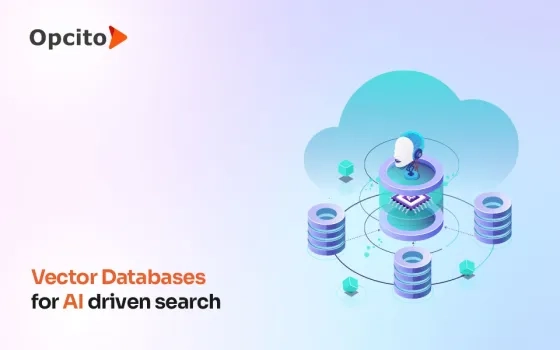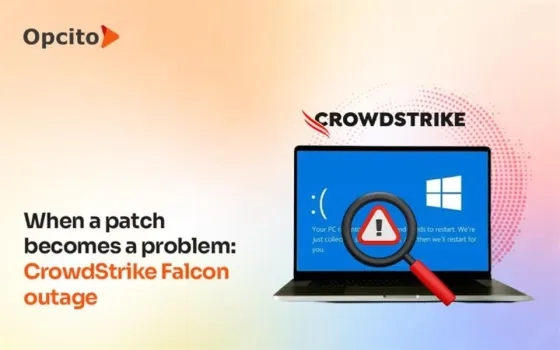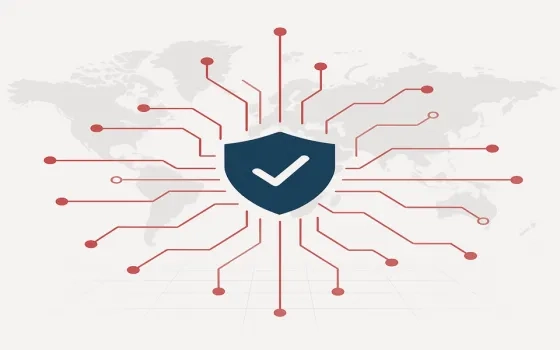In the realm of cybersecurity, the year 2023 emerged as a pivotal year marked by widespread coverage of distributed denial of service (DDoS) attacks, persistent ransomware challenges and apprehensions over global supply chains. The past year witnessed a notable drive towards cybersecurity digital transformation. Notable instances included the targeted series of credential-stuffing attacks on Hot Topic, an American apparel retailer. Furthermore, multiple banks in Italy faced disruptions due to targeted DDoS attacks. Prospect Medical Holdings, a prominent hospital network in the United States, fell victim to a ransomware-driven cyber attack in 2023. Similar challenges were also encountered within the public sector landscape.
In 2023, there was a significant rise in the adoption of zero-trust architecture, driven by the dynamic shifts in network structures, escalating cyber threats, the growing adoption of cloud and a shift towards data-centric and user-centric security models. This underscored the importance of establishing a robust cybersecurity strategy that extends beyond merely protecting data and infrastructure to also instilling stakeholders’ confidence.
Entering 2024, it's essential for organizations to transition from a reactive to a proactive and predictive approach in cybersecurity. Here, we explore key trends anticipated for the year, highlighting the challenges companies may face while adapting to these developments. The discussion includes innovative strategies that empower organizations to not only react but also anticipate and stay ahead of the evolving cyber threat landscape. The ultimate goal is to enable organizations to establish a strong, resilient cybersecurity framework, effectively protecting their digital assets against both current and future threats.
Securing against advanced persistent threats
Cybersecurity experts categorized "Advanced Persistent Threats" (APTs) as one of the most perilous cyber threats to date. APTs infiltrate business systems while targeting mobile phones, wearables and smart devices. Additionally, leveraging strategies such as Living-Off-The-Land (LoTL) attacks, APTs present substantial risks owing to their complexity, making their detection even more difficult, as highlighted by Kaspersky's Global Research and Analysis Team (GReAT).
Heading into 2024, cybersecurity experts strongly recommend that organizations safeguard themselves against APTs by taking precautionary measures. This includes regular checks for unauthorized access using robust systems, integrating threat intelligence feeds, adopting behavior-based protection and creating secure environments for handling suspicious files to strengthen overall security. In essence, organizations should prioritize establishing a dedicated cybersecurity strategy coupled with continuous network monitoring tools to mitigate risks and proactively thwart damages caused by potential APT attacks.
Cybersecurity trends and strategies for 2024
Creating a resilient cybersecurity strategy requires organizations to become more proactive and predictive in their cyber approaches. This will ensure constant vigilance and adaptability. As 2024 approaches, let's delve into the expected top cybersecurity trends.
Trend #1: Role of digital risk management
Digital risk management has now become a key strategy for numerous organizations, enabling the effective integration of cybersecurity measures across their digital infrastructure.
Over time, traditional methods of tallying threat incidents have proven insufficient in combating sophisticated cyber-attacks. Forward-thinking organizations are increasing their investments in cybersecurity and embracing advanced technologies. As per the CompTIA State of Cybersecurity 2024 report, approximately 30% of organizations are adopting a more rigorous approach by conducting enterprise-wide risk assessments, without a formal risk management framework.
In contrast to other business departments that measure success through returns on investment, evaluating the effectiveness of cybersecurity is a distinct challenge. Given that cybersecurity strategies don't directly generate revenue, increased spending on them hasn't necessarily resulted in proportionate financial returns. Metrics such as the "percentage of fixed systems" or "trained experts" have traditionally been utilized to measure cybersecurity performance, revealing a gap in connecting cybersecurity initiatives with the overall well-being of the organization.
This is where digital risk management steps in. With risk identification, IT vulnerability management, probability assessment, and the development of resilient strategies, cybersecurity experts effectively close the gap between expenditure and desired results. Organizations are recognizing the unattainability of perfect cybersecurity and are instead prioritizing rigorous cyber risk management practices over limitless spending to bolster their security measures.
Trend #2: Gen AI – the next cybersecurity tool
Gen AI and Large Language Models (LLMs) are swiftly emerging as key elements in strengthening cybersecurity. These AI tools possess the capability to influence both attackers and defenders: attackers use them to craft persuasive phishing content, leveraging LLMs to remove errors and cultural inconsistencies, while cyber defenders harness their power to bolster defence methods. Alarmingly, 51% of IT decision-makers anticipate a successful cyberattack attributed to Gen AI within the upcoming year.
However, on a positive front, cyber defenders acknowledge Gen AI's potential to bolster cybersecurity by enhancing the organization's capabilities in detection, response and attribution. This contributes significantly to tackling global cybersecurity issues such as overwhelming threats and shortages in skilled personnel. Intriguingly, the impact of Gen AI and LLMs extend beyond tools for attackers; these technologies are anticipated to be offered as services in underground forums, furnishing resources for malicious activities. As they advance, they will play a pivotal role in shaping the landscape of cybersecurity in the days ahead.
AI is projected to wield a pivotal role in global cybersecurity threats and defense throughout 2024. Its strategic advantages will be integral to an effective cybersecurity strategy, facilitating risk identification, streamlined analysis of data patterns, and aiding in prevention or mitigation through real-time anomaly detection and automated incident response.
Trend #3: Standardization of cyber insurance and regulations
Private entities as well as governments are increasingly acknowledging the implications of cyber threats on national security and economic stability. The development of new cybersecurity regulations is notably shaped by the potential social and political ramifications associated with widespread data breaches. For instance, in the United Kingdom, organizations must adhere to the Product Security and Telecommunications Act by April 2024, which establishes crucial security standards for networked products, including the prohibition of default passwords during shipment.
Consequently, there's a notable shift occurring in cyber insurance towards standardization among providers, transitioning from individual broker requirements to a more centralized control or framework-based model. Munich Re forecasts a significant surge in the global cyber insurance market, with projected premiums expected to escalate from $12 billion to $33 billion by 2027.
In the last three years, the growth and advancement of cyber insurance have become apparent, driven by technological advancements, the emergence of AI tools, global geopolitical tensions, and risks associated with 5G technology. Specialized categories such as "Acts of War" have now become prevalent in insurance policies. However, the varying risk evaluations conducted by different insurance carriers present their own set of challenges. Anticipated for 2024 is a transition towards a core control or framework-based methodology, enabling insurance providers to standardize risk management strategies across all cyber threats, irrespective of the size or nature of the insured entity.
The road to cyber resilience
In 2024, developing and executing proactive cybersecurity strategies will require organizations to tackle multifaceted challenges stemming from advanced technologies like Gen AI, necessitating vigilant defenses and refined digital risk management. Conforming to standardized cyber regulations will present compliance obstacles, while aligning with uniform cyber insurance models for diverse risk profiles within organizations. Additionally, security concerns arising from digital transformation initiatives may introduce intricate issues, while the proliferation of remote workforces will escalate cybersecurity risks. Navigating varied geopolitical landscapes amidst globalization will offer both opportunities and challenges. Addressing talent shortages will also emerge as a pivotal priority in this landscape.
To navigate the complex cybersecurity landscape of 2024, organizations need to shift from a reactive posture to a proactive and predictive approach. Establishing a resilient cyber defense is crucial, and this involves integrating key elements such as Governance, Risk, and Compliance (GRC), Security Vulnerability Scanning (SVS), Integrated Security Systems (ISS), and Identity and Access Management (IAM). These components are essential in building a comprehensive cybersecurity framework that offers consultancy, transformation, and operational support.
The shield against cyber threats
The cybersecurity landscape stands at the cusp of a transformative shift. In this swiftly evolving digital era, the significance of safeguarding digital assets has reached unprecedented heights. Thriving organizations are those embracing a predictive, adaptive approach, harnessing state-of-the-art technology to proactively stay ahead of emerging threats.
Businesses exemplifying resilience and agility aren't just surviving; they're positioning themselves to assertively lead the next wave of digital transformation.
































